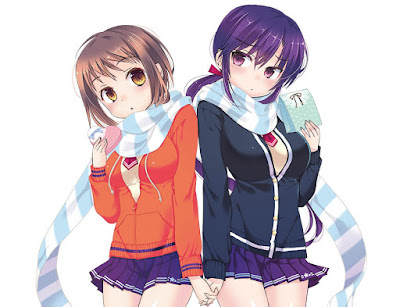What Motivates Cosplayers
 |
| An amazing BNHA photoshoot in Wondercon Anaheim 2019 |
Motivation is a powerful emotion for people by encouraging them to go beyond their normal boundaries. For cosplayers, there is a myriad of reasons for cosplaying, from honoring a favorite character to obtaining popularity and fame. For researchers, investigating motivating factors for cosplayers is a popular subject. There are multiples ways to separate motivational factors, two of them are intrinsic motivation and extrinsic motivation. Intrinsic motivation is a classification of motivation where the inspiration for the motivation comes internally, from within the person. Extrinsic motivation is a classification of motivation where the inspiration for the motivation comes externally, outside of the person. This essay will explore the idea of cosplay motivation through intrinsic and extrinsic motivation.
“The act of being motivated by internal factors to perform certain actions and behavior is called intrinsic motivation. In other words, intrinsic motivation means doing something just because you want to (Shrestha, 2017).” There are many intrinsic reasons why people cosplay. Domsch (2014) declared that cosplayers come from the desire to make visible the source material and to embody it and give presence in the real world. Yamato (2020) found that people express themselves through their cosplay and also use it as a medium for expressing adoration and affection towards a specific fictional character. Nichols (2019) suggested that cosplayers perform experienced and aspirational identities, who people are, and who they want to be. Rosenberg and Letamendi (2018) asserted cosplayers engage in cosplay because it allows them to be more outgoing than their usual selves. The top three reasons for cosplaying are for fun, a vehicle for artistic expression, and a way to honor a character. Lamerichs (2011) argued that cosplay is how they express affection for existing stories and rework it. They do more than just cosplay the characters, they might write fanfiction about the characters or draw fanart about them. As you can see, there are many reasons for intrinsic motivation for cosplayers.
 |
| Byleth in Anime Impulse 2020 |
As you can see with the academic research, there tends to be more intrinsic motivational factors for cosplaying than extrinsic motivational factors. Depending on the cosplayer, they might have more intrinsic motivation than extrinsic motivation for cosplaying, some cosplayers have more extrinsic motivation than intrinsic motivation for cosplaying. Many things motivate cosplayers, and it depends on what their goal for cosplaying is. If a cosplayer aspires to become popular and has more friends, their motivation for cosplaying is more extrinsic motivation. If a cosplayer aspires to bring a character, they love to bring to life so that this character feels more real, more tangible to them, their motivation for cosplaying is more intrinsic motivation. In the end, they are both different forms of motivating cosplayers to push themselves outside of their normal boundaries. It ultimately helps them as a cosplayer since it helps them develop their identity and carve their path in the cosplay fandom culture.
Disclaimer: This research is part of my cosplay presentation for the university I work in, I posted this on my blog because I welcome any suggestions for additional scholarly, peer-reviewed journals. Thank you for your contribution to scholarly research on cosplay.
References
Domsch, S. (2014). Staging icons, performing storyworlds – From mystery play to cosplay. Acta Universitatis Sapientiae, Film and Media Studies, 9, 125–139.
Lamerichs, N. A. (2011). Stranger than Fiction: Fan Identity in Cosplay. Transformative Works and Cultures, 7, 32.
Lome, J. K. (2016). The Creative Empowerment of Body Positivity in the Cosplay Community. Transformative Works and Cultures, 22.
Mongan, S. F. (2015). Finding Truth in Playing Pretend: A Reflection on Cosplay. Transformative Works and Cultures, 18.
Nichols, E. G. (2019). Playing with identity: gender, performance and feminine agency in cosplay. Continuum: 'As If': Women in Genres of the Fantastic, Cross-Platform Entertainments and Transmedial Engagements, 33(2), 270–28
Peirson-Smith, A. (2013). Fashioning the Fantastical Self: An Examination of the Cosplay Dress-up Phenomenon in Southeast Asia. Fashion Theory, 17(1), 77–111.
Rahman, O., Wing-Sun, L., & Cheung, B. (2012). "Cosplay": Imaginative self and performing identity. Fashion Theory, 16(3), 317–341.
Rosenberg, R. S., & Letamendi, A. M. (2018). Personality, behavioral, and social heterogeneity within the cosplay community. Transformative Works and Cultures, 28.
Scott, S. (2015). “Cosplay is serious business”: Gendering material fan labor on heroes of cosplay. Cinema Journal, 54(3), 146–154.
Shrestha, P. (2017). Extrinsic Motivation. https://www.psychestudy.com/general/motivation-emotion/extrinsic-motivation
Shrestha, P. (2017). Intrinsic Motivation. https://www.psychestudy.com/general/motivation-emotion/intrinsic-motivation
Yamato, E. (2020). Self-identification in Malaysian cosplay. Transformative Works and Cultures, 34.





Comments